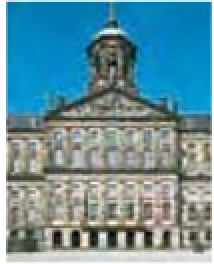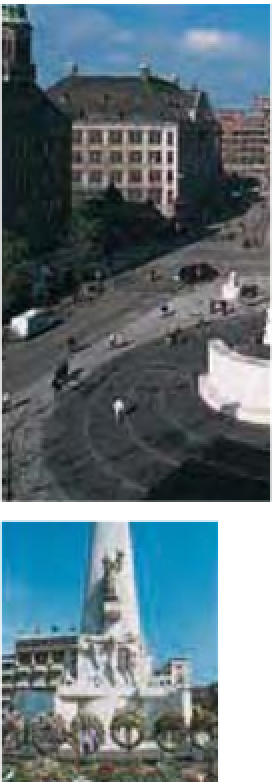Travel Reference
In-Depth Information
Dam Square
The very heart of Amsterdam, Dam Square - or “the Dam”, as the locals call
it - marks the site of the original 13th-century dam on the Amstel river
(see
p11)
. An architectural parade spanning six centuries includes the glorious
Nieuwe Kerk and the Koninklijke Paleis. By the 17th century, with the town
hall here and the Exchange nearby, the Dam had become the focus of
Amsterdam's political and commercial life. The passage of years may have
eroded some of its grandeur - but certainly none of its colour or its vitality.
Top 10 Sights
1 Koninklijk Paleis
2 Nieuwe Kerk
3 Nationaal Monument
4 Madame Tussaud's
Scenerama
5 Damrak
6 De Bijenkorf
7 Rokin
8 Kalverstraat
9 Grand Hotel Krasnapolsky
0 Street Performances and
Events
A horse and trap near the
Nationaal Monument
There are cafés in
Madame Tussaud's,
De Bijenkorf and the
Nieuwe Kerk - the
latter with a terrace
overlooking the Dam.
Go to one of the
concerts, lectures or
exhibitions held at
the Nieuwe Kerk.
• Map M3, N3
•
Koninklijk Paleis: open
Feb-Jun & Sep-Nov:
12:30-5pm Tue-Thu; late
Jun-mid-Sep: 11am-5pm
daily (check website:
www.koninklijkhuis.nl).
020 620 4060.
Admission: adults €4.50;
children 6-16 €3.60;
under 6s free
•
Nieuwe Kerk: only
open during exhibitions.
020 638 6909.
Admission charge
•
Madame Tussaud's
Scenerama: Peek &
Cloppenburg Building.
020 522 1010. Open
Sep-Jun: 10am-5:30pm
daily; Jul-Aug:
9:30am-6:30 pm daily.
Admission: adults 17-59
€22.50, over 60s €17.50,
children 5-16 €10; under
5s free
Koninklijk Paleis
Built as the town hall,
Jacob van Campen's
unsmiling Classical edifice
symbolizes the civic power
of 17th-century Amsterdam
(above)
. It is still used for
state occasions
(see p39)
.
Nieuwe Kerk
Now a cultural centre,
the Nieuwe Kerk has
hosted royal events since
1814. Its treasures include
a Jacob van Campen
organ and an elaborately
carved pulpit by Albert
Vinckenbrinck
(see p42)
.
Nationaal
Monument
This 22 m (70 ft) obelisk
commemorates the Dutch
killed in World War II
(above
& centre)
. Embedded in the
wall behind are urns con-
taining soil from the Dutch
provinces and colonies.
34













